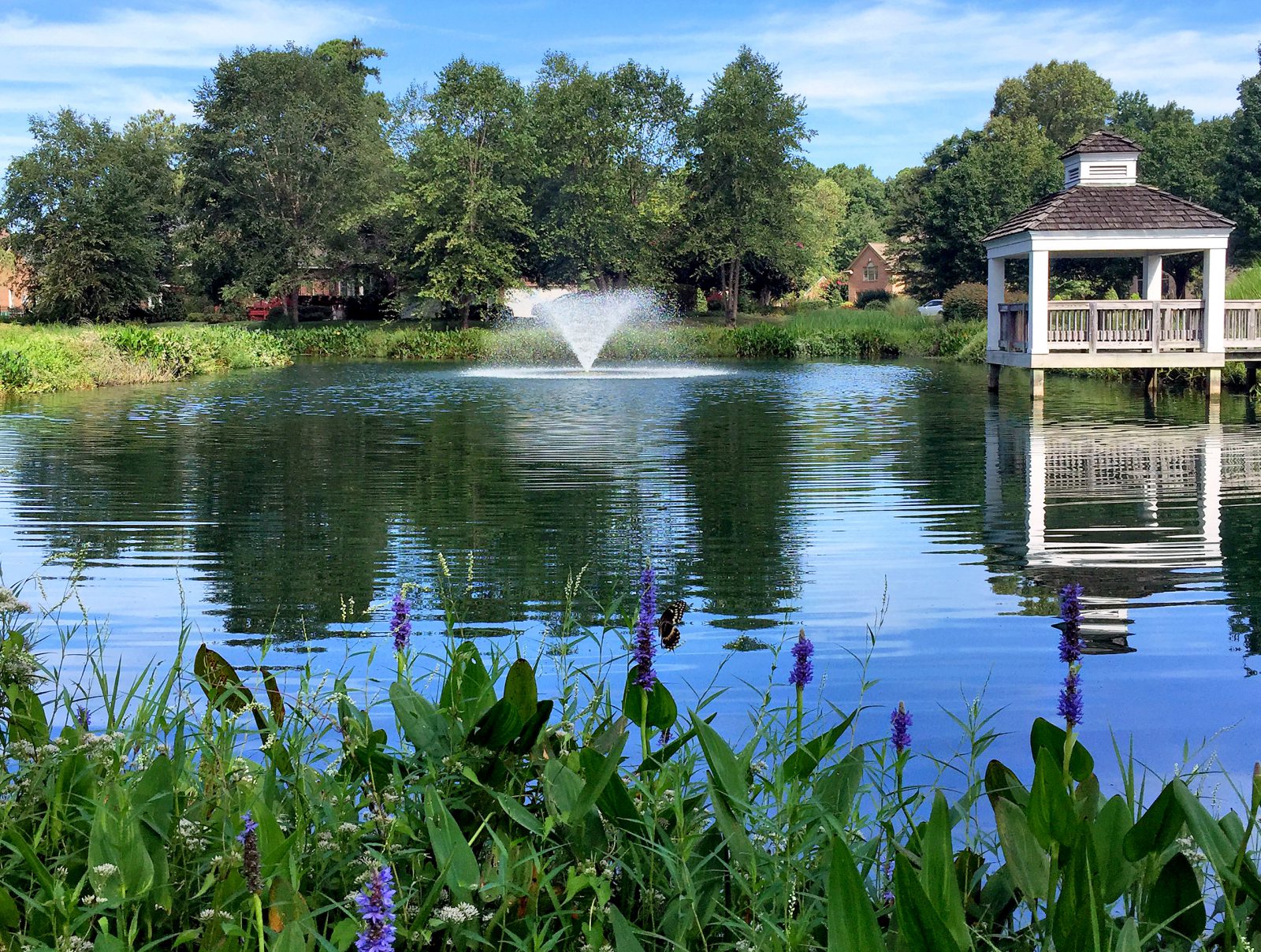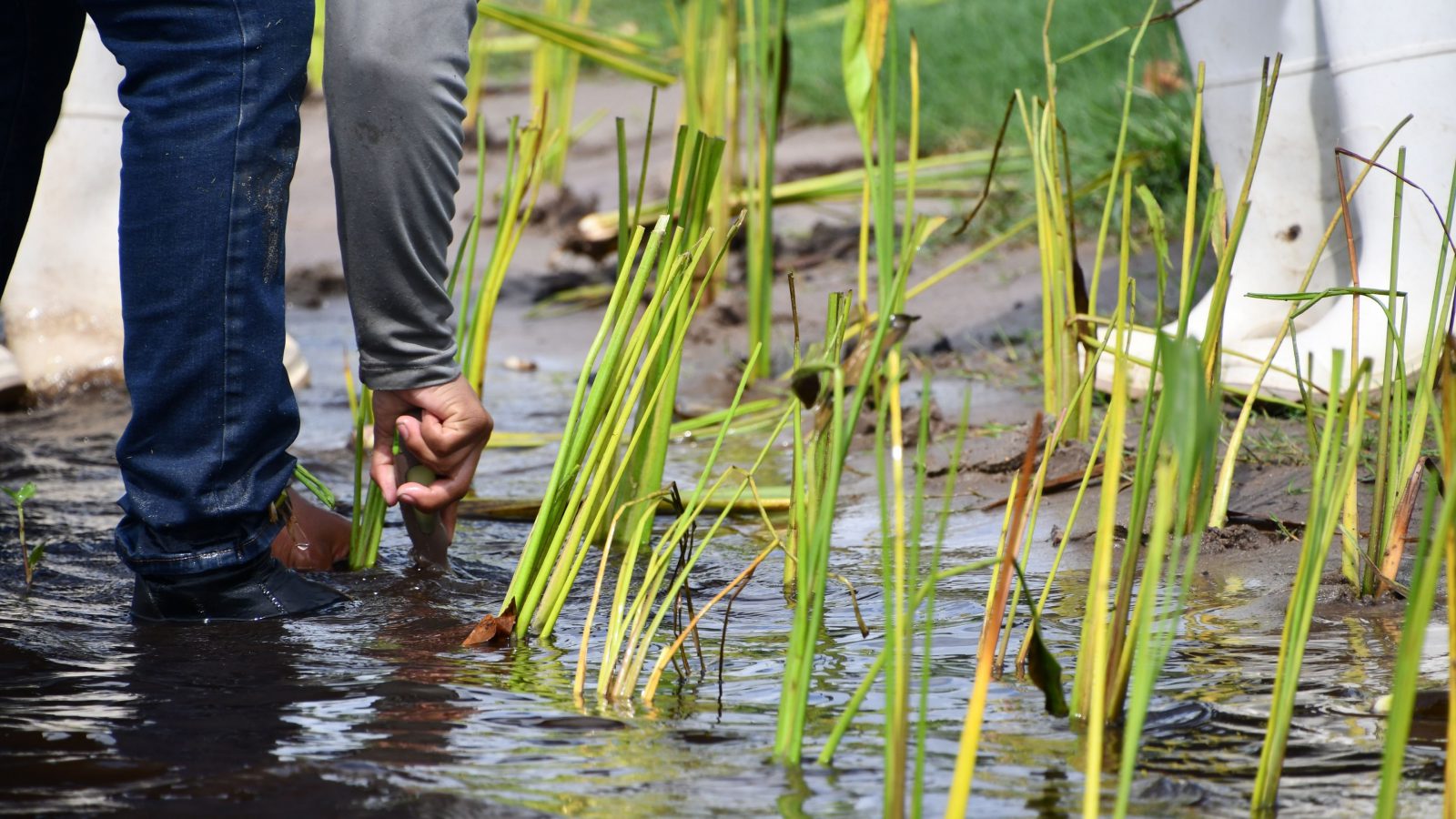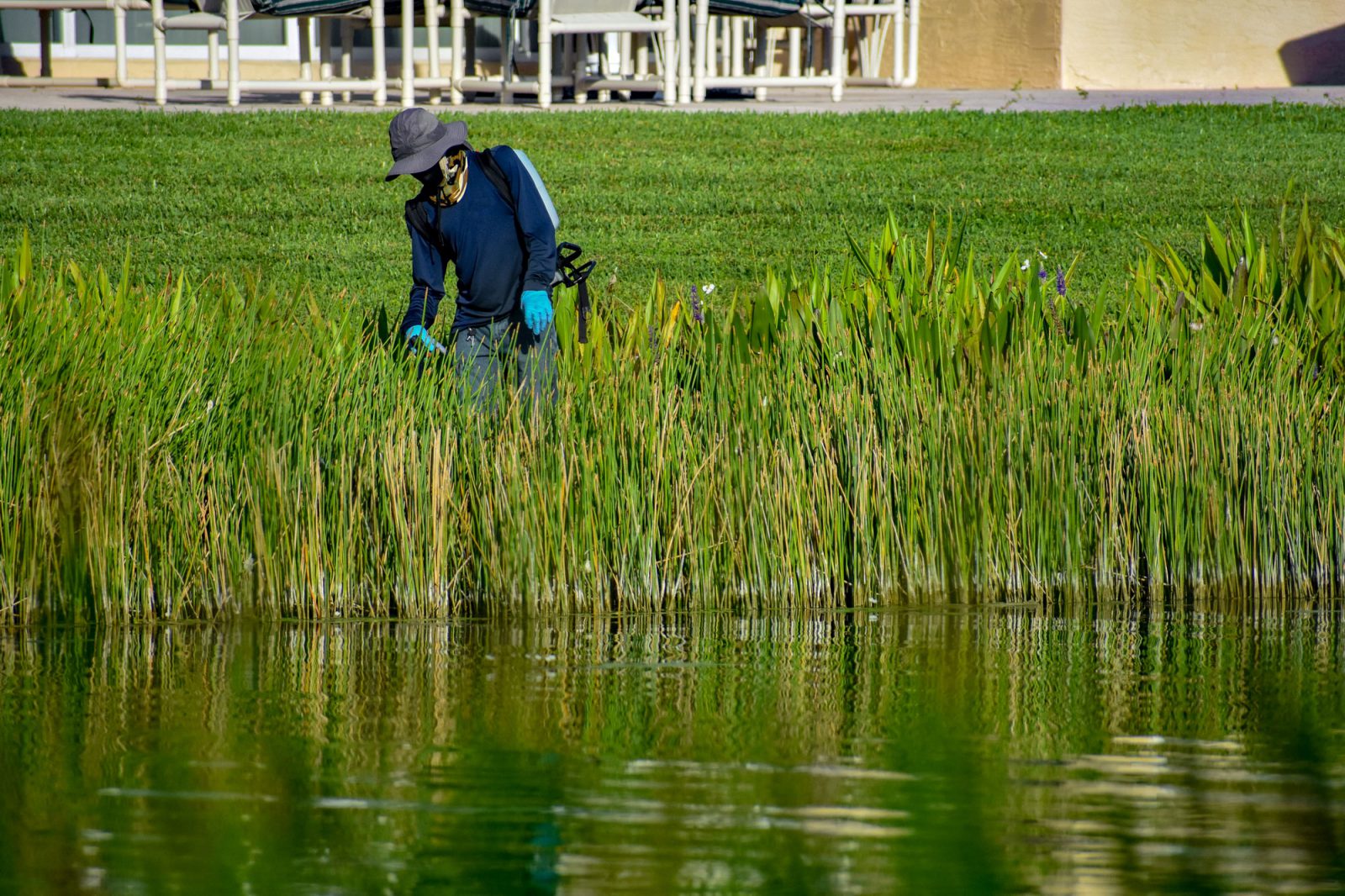
Establishing a Vegetative Buffer Along Your Lake’s Shoreline
Lakes and ponds are always in a state of change. Many natural influences like aquatic wildlife, sunlight, and temperature can have an impact on water quality conditions, but one of the biggest factors affecting the balance of a waterbody is stormwater runoff. During storms, rainwater flows across parking lots, sidewalks, and other impervious surfaces, picking up plant matter, sediment, trash, pet waste, and other nutrient-rich debris. Eventually, this water flows into our lakes and ponds.
In concentrated levels, nutrients can create imbalances that make it easier for weeds, algae, toxic cyanobacteria (blue-green algae), and water quality issues to occur. Even though lakes and ponds are essential features in our communities, it’s almost impossible to appreciate them when they’re filled with slimy, green growth and bottom muck, and emanating foul odors. And once they get to this point, reversing these problems can be challenging and costly. Intercepting stormwater runoff is one of the best ways to prevent these conditions from developing in the first place.
Lake Shoreline Buffers: Functional & Beautiful
Professionals recommend maintaining a robust buffer of vegetation around the perimeter of the water to slow and filter stormwater runoff before it enters the water. These beneficial buffers should extend 3-5 feet from the shoreline and be maintained at approximately 18 inches in height. In addition to filtering runoff, buffers can provide crucial habitat for beneficial birds, amphibians, and mammals while stabilizing sediment along the shoreline.
Beneficial vegetative buffers aren’t just functional, they can also be incredibly beautiful and customized to the aesthetic needs of a property, whether that’s a golf course, homeowners association, private property, or public park. Choosing the right selection of native plants depends largely on the region in which your waterbody is located. Native grasses, sedges, rushes, and flowering species are excellent choices. These might include beneficial plants like swamp milkweed, sweet flag, pickerelweed, arrowhead, cardinal flower, and rain lily – to name a few.
The Different Buffer Zones
A professional can help you identify the right vegetation, as well as determine where it should be planted for successful incorporation. Beneficial buffers are composed of several zones, including the littoral zone which is home to many floating-leaved plants, a riparian zone where emergent plants can be found, and the upland zone which contains sedges, grasses, and other deep-rooted species. Pickerelweed, for example, thrives in the littoral zone while Iris or Jewelweed thrive in moist to dry soils on the bank or land.
Once the buffer is established, it must be regularly maintained to keep it functioning as intended. This may involve removing weeds, pruning plants, or introducing additional plants as needed. Be sure to collect and properly dispose of all trimmings to prevent them from decomposing in the water.
Monitor Your Buffer for Invasive Plants
It’s also important to keep an eye out for undesirable growth in the buffer area. For example, trees and plants with aggressive root systems like willows and cottonwoods should be removed to prevent shoreline damage and erosion. Invasive species are also detrimental. Plants like Phragmites and purple loosestrife can quickly dominate an aquatic ecosystem by out-competing native beneficial species. Identifying them early through consistent monitoring is essential for the long-term health of a waterbody.

Achieve Beautiful Water with Integrated Management
Integrating and maintaining a buffer can sometimes be a chore, but the right partner can take the burden of monitoring and maintenance off your plate through an ongoing program that incorporates fountains and aeration, nutrient remediation, biological bacteria, and mechanical hydro-raking. When used together, these proactive solutions help prolong the health, functionality, and enjoyment of water resources, while keeping maintenance costs as low as possible.
Shoreline Management Solutions
SOLitude Lake Management is a nationwide environmental firm committed to providing sustainable solutions that improve water quality, enhance beauty and preserve natural resources.
SOLitude’s team of aquatic scientists specializes in the development and execution of customized lake, stormwater pond, wetland and fisheries management programs. Services include water quality testing and restoration, algae and aquatic weed control, installation and maintenance of fountains and aeration systems, shoreline erosion control, muck and sediment removal and invasive species management. SOLitude partners with homeowners associations, golf courses, private landowners, businesses and municipalities. SOLitude Lake Management is part of Rentokil, a leading business services company, operating across the United States, Canada and Puerto Rico.
For more information, visit SOLitude Lake Management at solitudelakemanagement.com, and connect on Facebook, LinkedIn and Twitter.












